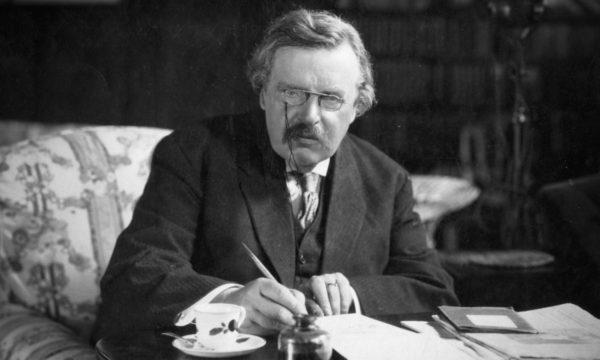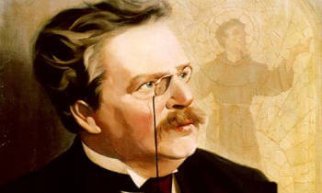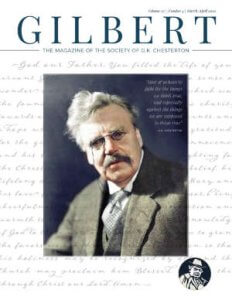Chesterton went to Rome in 1929 to attend the Beatification of the English Martyrs. While he was there, he had personal audiences with both Mussolini and Pope Pius XI. In both cases, he did not do much talking. In the first case, it was because Mussolini did all the talking. In the second case, it was because Chesterton was absolutely overwhelmed by being in the presence of the Vicar of Christ.
It epitomized his entire experience in Rome. Even Chesterton’s great powers of language failed him in trying to describe the Eternal City. But that did not stop him from writing a book about it. He said he could have written an entire book merely by looking out of the window of his hotel room. After all, he had one of the best views of the entire city from the Hotel Hassler at the top of the Spanish Steps. His problem, however, was wanting to write about everything. And Rome simply provides too much material. “Rome,” he said, “is too small for its greatness, or too great for its smallness.”
It is, among other things, the city of fountains. Chesterton naturally noticed the paradoxical nature of a fountain: it is a case of water running uphill. And it is a perfect symbol of Rome because it represents the sense of secret things thrust up from below. Rome is a place “where everything is buried and nothing is lost.” It is a city full of tombs, and yet it is full of life. The mortuary images “do not carry the savour of mortality but rather immortality.” It is not a place where we return to the past, but where the past returns to the present.
The most famous spot in Rome is built over a grave. St. Peter’s Basilica is, says Chesterton, the eternal rock of offense: a stumbling block to the Puritans and folly to the aesthetes. There are churches and shrines all over the world in which people can realize their own insignificance in the presence of Christ, but this place is set apart. It is here where the claim is made that the resident curate possesses a special warrant from Christ Himself.
There are two main ideas, says Chesterton, represented by St. Peter’s: certitude and the spoken word. They are woven into the architecture but also embodied in the many, many statues that populate and even overpopulate Rome. They are all preaching. They are the rocks crying out. They have the certitude of rock and the pose of the spoken word. They stand for “the intolerant and intolerable notion that something is really true; true in every aspect and from every angle; true from the four quarters of the sky; true by the three dimensions of the Trinity.”
As the title of Chesterton’s book suggests, Rome is all about resurrection. The difference between the Christian idea of Resurrection and the Eastern idea of Return. The Eastern idea is something like the conservation of energy: “some elemental force returns in some form, but the form does not return.” But in the West, the Christian Creed has the unique “audacity to assert that a thing will actually recover its identity because it will recover its form.” “The history of Christianity cannot be understood unless it is realized that it started with the staggering miracle of a dead man who was a live man, and who was not a ghost.”
But besides the eternal religious resurrection, Rome has experienced political resurrections as well. One of the most enormously pleasing things to Chesterton was that after the Lateran Treaty which created the Vatican State, the Church managed to combine “the largest of all religions with the smallest of all nations.” This brought together two principal ideas that he was always trying to defend: “the value of little states and local liberties; the necessity of a general moral philosophy big enough to defend such little things.”
But in 1930, there was also another kind of Roman resurrection taking place, the rise of Fascism. Chesterton’s chapter on this event is one of the most difficult chapters in all of Chesterton’s works because he is obviously trying to negotiate his way through the thick of a huge phenomenon while it is unfolding. There are some people who read this book who think that Chesterton gives too much praise to Mussolini. With the advantage they have of hindsight, nothing less than total condemnation will do. His chief criticism is that what Mussolini practices out in the open, the English government carries out in secret.
But Chesterton leaves no doubt that he is against dictatorship, and he sees clearly that the problem with Fascism is that it “appeals to an appetite for authority, without clearly giving the authority for the appetite.” He is already seeing its undoing as he notes it “may silence rebels in practice, but it invites rebels in principle.” It may have brought order to the State, but it cannot last, he says, unless it brings order into the mind.
And as a matter of fact, it did not last. But Rome is still alive.





